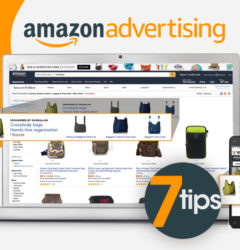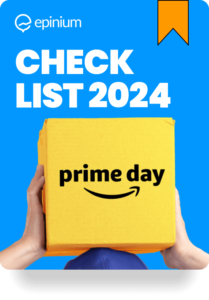When it comes to Amazon Marketing, we can see a set of actions to promote and sell products on Amazon which includes:
Advertisement on Amazon is usually subject to a fee, and the advertising itself may take place directly on Amazon or other websites and platforms.
External Marketing is Off-Amazon and can be either Paid or Non-Paid. Using promotional channels not offered directly by the platform
Amazon SEO takes place on the platform; most measures are non-paid.
Optimizing product pages to improve their visibility in Amazon’s organic search results.
Amazon Advertising: Using native Amazon advertising formats to boost brands and products.
Running an Amazon Marketing Strategy is just a milestone for achieving a competitive advantage on the Amazon platform via the following channel.
Amazon SEO — Rank High in Search Results
Search Engine Optimization (SEO) is one of the best-known practices of online marketing. It helps you to appear as high as possible in the search results for specific queries. Today, more people are directly searching on Amazon than they are on Google. This makes Amazon the number 1 platform for product searches on the Internet.
Ensuring your own products rank high on Amazon is critical. As a result, Amazon SEO is one of the most essential elements in an Amazon marketing strategy. We gathered up the key factors for a successful ranking on Amazon:
1.1 Optimize product text for Humans and Machines for Best Results
Follow these Amazon marketing principles when creating descriptions and product texts (title, bullet points, product description, EBC / A + content):
When it comes to information you could provide all the necessary information for the buying decision
In terms of communication: Highlight the benefits and USPs of the article in the description.
How do your product’s features help potential buyers? How exactly do they benefit from them?
Presentation: Present and structure information so that customers can receive it quickly and easily.
Additional content marketing options are available for sellers with Amazon Brand Registry (Enhanced Brand Content (EBC)) and vendors (A+ Content). An integrated modular system, for example, enables the combination of texts and images to high-quality product descriptions. The result: Vastly improved options to show off products and brands and to use cross-selling.
1.2 Product Images: Lots of Pics in High Resolution
Pictures often say more than a thousand words. That’s why attractive, conversion-optimized product images play an important role in Amazon marketing. The first thing a customer sees of a product is its images. Professional and deliberate product images make a good impression and thereby increase the click rate and conversion rate.
1.3 Competitive Pricing Refines Ranking
An attractive price is conducive to organic ranking. Whether or not a price is “attractive” depends on the competitive environment of a keyword. Salespersons should compare the prices of the products above and below their own product and, if possible, position themselves competitively. The best way to determine the “perfect” price setting for a product during your Amazon marketing campaign is ultimately by simple experimentation. This is why you should be using software to help to monitor the changes in results after changing the price of your product.
1.4 Essential keyword Research and Proper Placement
Researching and picking the best keywords for a product is at the core of Amazon SEO marketing. Once all the relevant keywords have been researched and allocated to the product, a larger variety of search queries can make the product display in the search results, hence, the product becomes more visible.
The right placement of the keywords in the product is just as important for the ranking. Constant and in-depth testing, the most relevant keywords for a product ranking are the ones in the title, followed by the generic keywords.
They are followed by keywords in the product attributes (bullet points) and the description. Repetition of keywords brings no advantage and is therefore not needed — in fact, it almost does not waste valuable space.
Be careful when entering your “generic keywords” in the backend: Amazon will ignore them if they exceed 249 bytes.
1.5 Always answer Q & A
Some of the questions that customers can ask on the product page are just as important. Often, customers ask about specific details of the application or other information they can’t find on the product page. Sellers, vendors, and other customers can answer questions. Sellers and vendors should address unanswered questions on a common basis to make sure that customers receive correct answers.
1.6 Shipping Method: FBA Leads to Better Ranking
The use of the FBA (Fulfilment By Amazon) shipping service also has a positive impact on ranking. More and more buyers are Amazon Prime members who prefer to buy FBA products because they don’t pay shipping fees.
In other words: You can achieve more sales and a better conversion rate with FBA. This, in turn, has a positive effect on the ranking.
1.7 Product Reviews: Encourage Positive Feedback
Amazon reviews can either boost a product or else ruin it. That means it is crucial to respond to negative reviews. If done correctly, careful review management converts a negative rating into a positive one.
Amazon itself also offers vendors and sellers its fee-based review generation programs: Amazon Vine (vendors) and the Early Reviewer Program (sellers).
So, this is it for today’s post folks!
As usual, if you have any doubts on this post, feel free to ask on the comments section down below and we will shortly answer you!





